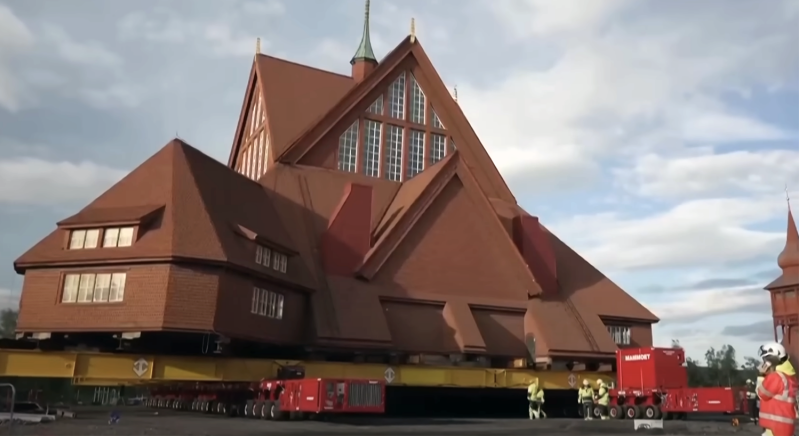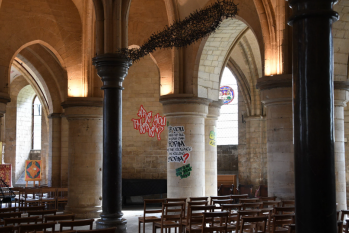
A 113-year-old wooden church in Sweden’s far north has been successfully relocated to a new site after a two-day journey across the city of Kiruna, according to BBC reporting. The move was carried out to protect the landmark from ground subsidence caused by more than a century of iron ore mining.
The red timber church, once voted Sweden’s most beautiful pre-1950 building, was transported 5 kilometers (3 miles) on specially designed trailers moving at a maximum speed of half a kilometer per hour. Engineers widened roads, dismantled lamp posts, and even removed a bridge to make way for the 672-tonne structure.
Project manager Stefan Holmblad Johansson told the BBC the relocation was “very big and complex,” but added that everything went according to plan. The church reached its new foundation several hours ahead of schedule on Aug. 20, drawing applause and smiles from crowds who lined the streets to watch the spectacle.
The relocation is part of a $1 billion citywide move, funded by the state-owned mining company LKAB, which operates the world’s largest underground iron ore mine beneath Kiruna. Swedish law prohibits mining under existing buildings, and fissures linked to extraction have made parts of the old city center unsafe.
The church’s journey began with a blessing from its vicar, Lena Tjärnberg, and Bishop Åsa Nyström of the Diocese of Luleå. Thousands of people, including locals, visitors from across Sweden, and even King Carl XVI Gustaf, turned out to witness what one culture strategist described to the BBC as “history taking place in front of our eyes.”
For many residents, the move carried deep emotional weight. “I’m not a deeply religious person … but this is part of my tradition, history and culture,” one woman told the BBC. Others said they were simply amazed the building could be moved intact instead of being dismantled.
The next stage of work involves lowering the structure onto its new foundations and restoring it ahead of a planned reopening in late 2026. Despite its new location next to a cemetery on firmer ground, church leaders emphasized that its role as a gathering place for the community remains unchanged.





